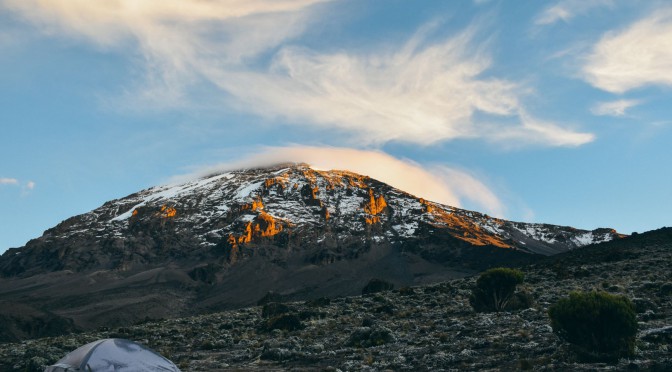Majestic Mount Kilimanjaro, which stands at 19,341 feet tall, is Africa’s highest mountain and one of its most beautiful sights. Over 40,000 people choose to climb this spectacular peak each year, keen to experience Tanzania’s stunning scenery and embark on a momentous personal challenge. Ian Taylor from www.iantaylortrekking.com is a Kilimanjaro specialist and has countless climbs under his belt. Here he discusses how to prepare for Kilimanjaro and stay safe on your trek.
Getting ready for your climb
The key to success on Kilimanjaro is excellent preparation and physical conditioning prior to your trip, as well as experience using your gear in a wilderness environment. You should never try to hike Kilimanjaro, or any other monumental peak, without preparation. You need to be able to walk 44.2 miles at high and extreme altitude, sometimes with 50% less oxygen in your blood scream and 50% less oxygen going to your muscles when you need it. You start hiking from 7,382 feet, covering about 16,500 feet on your way to the summit. This serious climb puts an extraordinary toll on your body so it’s essential that you are at your optimum levels of fitness and health. Increase your workout schedule in the months prior to your climb, making sure to get out in your local hills and mountains for lengthy walks.
What to pack
Don’t be fooled – Kilimanjaro is not for tourists. This is a serious mountain, an intense climb, which needs to be respected. You must be as prepared as possible, with the right gear and prior training to ensure you reach the summit. Your feet need to be taken care of on your trek. Buy a good-quality pair of hiking boots and wear these in well before you leave for Africa. I would also recommend packing a decent down jacket, a fleece, thermal underwear, good sunglasses and a headlamp.
Tips for ascending Kilimanjaro
Give yourself the time to prepare and understand the risks of climbing at a high altitude. Going too high too fast can be very dangerous. Less than 50% of people actually make it to the summit as they choose to go on five day cheaper climbs, not giving their bodies enough time to adjust properly. The key is the spend eight days on the mountain to give yourself the best chance of completing your climb. This will be more expensive due to the high cost of entering Kilimanjaro National Park but you need to consider what your ultimate goal is. You have travelled all the way to Tanzania to embark on this adventure. Why not pay a little more and give yourself the best possible chance of conquering your goals?
Adhere to this expert advice and there’s no reason why you can’t reach Kilimanjaro’s summit and have a life-changing experience. Preparation is key so make sure you spend time researching the route and sourcing all of the packing essentials. And remember, have an amazing time!
—
Those travelling to Tanzania are strongly advised to book an appointment at a TMB clinic and speak with a qualified professional about the different vaccinations they may require. All travellers really should consider cover against tetanus, hepatitis A and typhoid. Those travelling directly from Europe to Tanzania do not need to show evidence of cover against yellow fever at immigration but the vaccine against yellow fever is recommended for some travellers. This all needs to be talked through. Those who are trekking in rural areas also need to consider getting diphtheria, meningococcal meningitis and cholera vaccinations.
For more information about climbing Mount Kilimanjaro and to get expert trekking advice, please visit www.iantaylortrekking.com.

